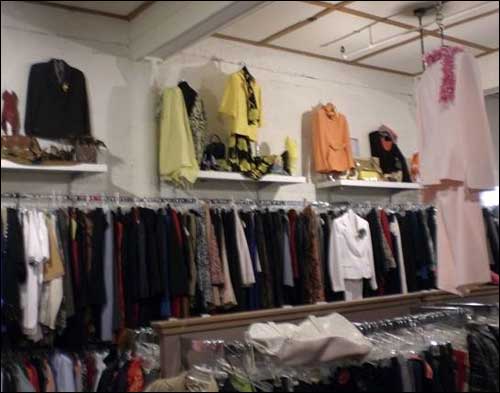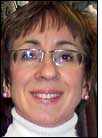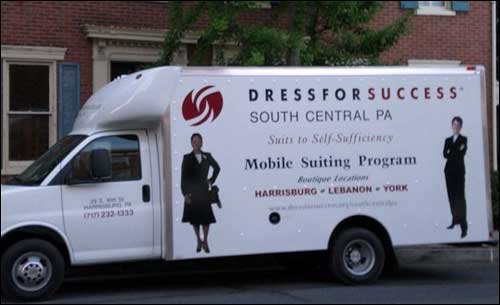Oct 06, 2009The Dress for Success (DFS) South Central PA affiliate of Dress for Success, an international nonprofit organization dedicated to helping women improve their lives, will soon employ radio frequency identification to track the apparel it provides to its clients free of charge. This will enable the organization's paid and volunteer staff members to know what they have in stock—no easy task when their inventory has no SKU labels and is acquired mostly through donations from area residents.
The organization gives each client one suit for a job interview, as well as up to a week's worth of work-appropriate clothing following that interview if she becomes employed. In the past two and a half years, its three boutiques—located in the cities of Harrisburg, York and Lebanon—have served 2,200 women. The outlets currently provide clothing to 200 women each month. The majority of the items are acquired through donations from local residents and businesses, though some are purchased. Area women who seek employment but lack the proper business attire for an interview can visit a local boutique and select an appropriate outfit, with assistance from volunteers.
With the RFID system, which is in the process of being installed for an initial pilot, DFS expects it will be able to track each tagged garment and accessory throughout the boutiques, as well as a large van with suits stored within, that can be delivered to those unable to reach the outlets.
Unlike most retail locations where items are displayed according to sizes and styles, and then tracked with bar-coded SKU labels on the price tags, this business has no such system. Instead, it is all-manual and all-visual, requiring volunteers and paid workers to walk among racks of garments, searching for clothing of the proper size, style and color for a particular client—and if it's not there, the search becomes more complicated. Often, they must place a phone call to the other two locations to determine if clothing of a specific size and color is available. The worst-case scenario would require that someone pull the large truck that acts as the mobile boutique out of the Harrisburg garage, then open the back and look through those items as well.
For several reasons, the Dress for Success operation in south-central Pennsylvania is unique. This is the first branch that operates boutiques in three locations, as well as the first to have a mobile boutique, according to the affiliate's CEO, Ruth Koup. That's because—unlike other regions, where customers can be expected to visit a single store at a central location—south-central Pennsylvania has mass transit and multiple independent communities, causing shoppers to stay within their immediate vicinity. All donated and purchased garments must then be shared among those boutiques, and are often moved back and forth between them, depending on clients' needs. Some more rural clients can not get to any of the brick-and-mortar sites. For that reason, Koup set up the mobile boutique.
The solution Motorola helped devise uses the company's handheld reader, Concept2 Solution's software and Avery Dennison EPC Gen 2 UHF RFID tags, incorporated into hangtags printed with Dress for Success logos. Once the tags are attached to garments, the organization's staff can utilize the Motorola MC9090 handheld interrogator to scan each tag and input data about the corresponding garment—its size, style and color, as well as to which of the four outlets (the three boutiques and the truck) it will be assigned. When this is completed, the reader is placed in a cradle, and the tag and garment information is uploaded into the standalone software system, provided by Concept2. Volunteers or staff members can then use the standalone software at any time on the store's PC, in order to determine which items are available in which location.
Koup says she is now seeking a grant to purchase several more handheld readers. Until then, the deployment will be limited to one store. Once expanded to all boutiques, she expects the system will yield a number of benefits. For one thing, her organization will always know exactly which items are on the truck and which are in a boutique. When a garment is offered to a client, the staff can read, remove and discard its tag, as well as input data indicating that item has been taken. In addition, employees at one boutique can read the tags of items as they arrive from another location, updating the system to indicate the item has been moved. The software will also be used to track how many items remain of any size or style—size-nine shoes, for instance. If the boutiques are running short of that size shoe, volunteers can get to work soliciting donations for that particular item.
"In this way, before we are desperately in need of something, we know it," Koup explains. "We can be proactive so that when, for example, someone calls and says they want to do a shoe drive, what do we want? We can be very accurate in our needs."
Dress for Success' volunteers have begun tagging scrubs worn by health-care workers. The organization purchased the scrubs as the first phase of the system's deployment. In the future, it intends to tag all of its 25,000 items, including jewelry, scarves and clothing. "We anticipate that the Harrisburg boutique will take eight hours to complete tagging all items," Koup says, "with four people working—totaling a 24-hour process for the inventory at that location." The other two sites, she notes, will take less time due to their smaller size.




